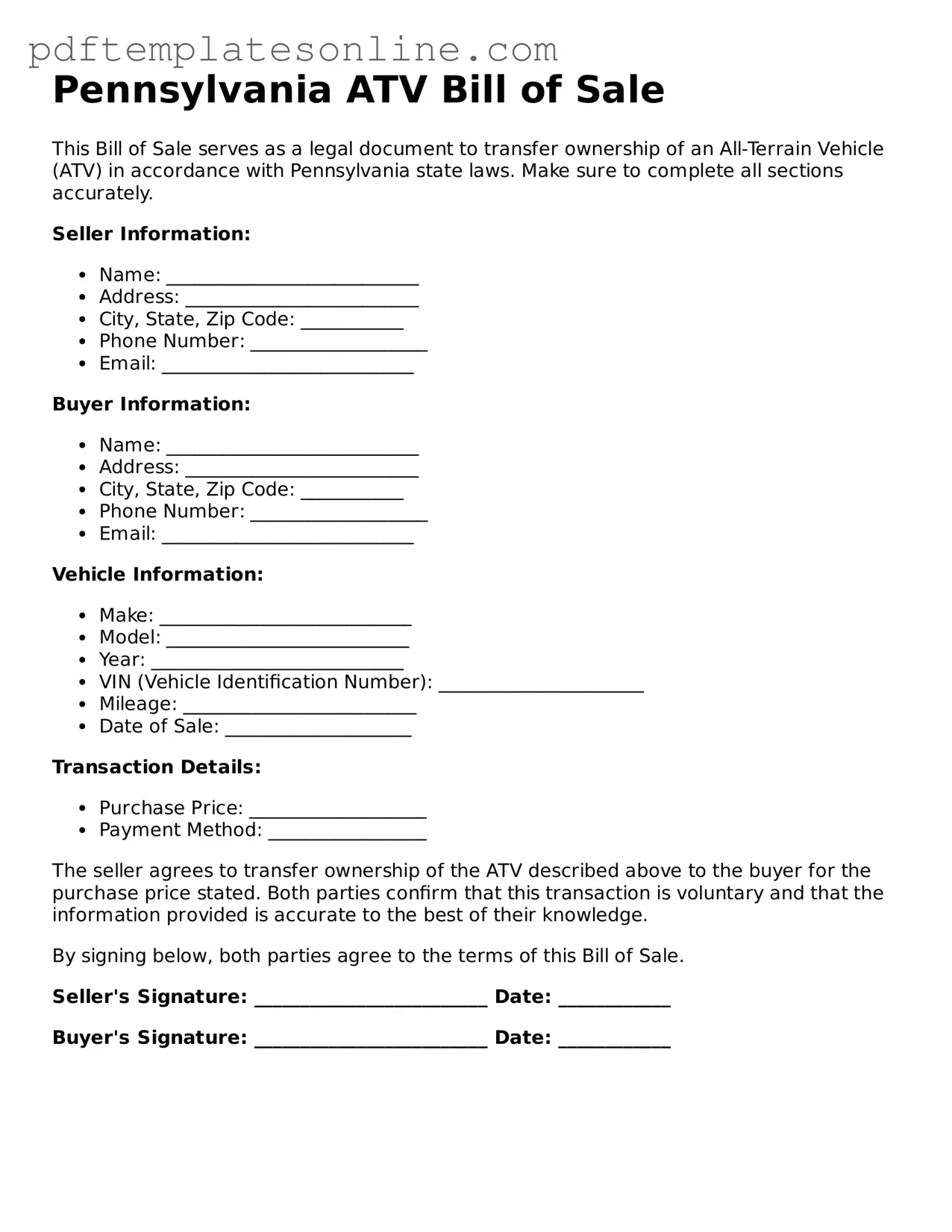Official Pennsylvania ATV Bill of Sale Document
The Pennsylvania ATV Bill of Sale form is a legal document that facilitates the transfer of ownership of an all-terrain vehicle (ATV) between a seller and a buyer. This form serves as proof of the transaction, outlining essential details such as the vehicle's identification number, purchase price, and the parties involved. Completing this form is crucial for ensuring a smooth transfer and for future registration purposes.
Access ATV Bill of Sale Editor Now
